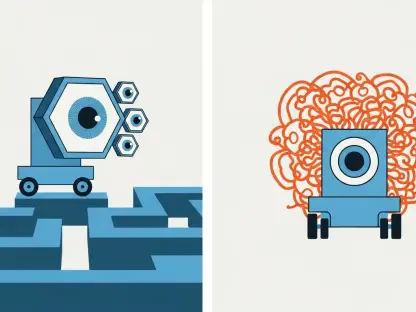As technology evolves, artificial intelligence (AI) emerges as an unparalleled tool for transforming emergency response scenarios, especially through the nuanced analysis of social media insights during natural disasters. Social media platforms such as X (formerly Twitter), Facebook, and Instagram have become pivotal sources for disseminating real-time information to both the public and government bodies in crisis situations. The overwhelming flow of data from these platforms necessitates advanced systems capable of filtering and interpreting this content efficiently. AI steps in as the pivotal solution, offering advanced techniques to parse through millions of posts, extracting significant data to identify distress signals, assess the severity of damage, and allocate resources effectively. This marks a paradigm shift from manual methods, which are often slower and less efficient, to highly responsive and informed operations fueled by AI intelligence. The continuous development and integration of AI into this domain highlight the shift towards smart solutions, reflecting the global need to enhance disaster response and management frameworks.
Transforming Data Parsing into Semantic Understanding
The evolution of AI systems in emergency responses is characterized by its progression from mere data parsing to sophisticated semantic understanding. Initially, AI tools relied heavily on pattern recognition, focusing on keywords or image detection processes. Despite their utility, these methods were often limited in providing context or understanding the underlying intent behind social media posts during emergencies, such as hurricanes, earthquakes, or wildfires. Current advancements have enabled AI to comprehend semantics, significantly enhancing its ability to categorize and prioritize situations based on urgency and need. This transformation ensures that those requiring immediate aid are accurately identified and contacted, facilitating quicker and more effective decision-making. Such advancements enable rescue teams to view a comprehensive, real-time overview of affected areas, helping them navigate complex scenarios with precision. Combining text and image analysis further exemplifies this nuance, allowing AI to interpret multiple inputs simultaneously, increasing situational awareness and refining response accuracy. This integration of technology in emergency scenarios underscores the crucial role AI plays in modern disaster management strategies.
AI in Action During Real-World Disasters
Reflecting on past disasters provides a compelling illustration of AI’s potential impact when integrated with social media monitoring. During events like Hurricane Sandy, which generated a staggering number of social media posts, the absence of robust AI tools limited the effectiveness of information processing. Today, AI systems are trained to autonomously sift through vast quantities of data, recognizing distress signals and mapping damaged infrastructure. This shift allows for an expedited retrieval of actionable intelligence, aiding emergency services in rapidly addressing the needs of those affected. AI methodologies involve categorizing social media data into distinct classifications, such as pleas for help or reports of structural damage. These classifications enable efficient retrieval and assessment processes, ensuring targeted interventions. The dual-identification technique employed—simultaneously analyzing text and visual cues—enhances the reliability of AI’s perceptions, facilitating informed and strategic response efforts. Overall, these advancements represent substantial improvements in speed, reliability, and efficiency in managing and responding to emergency situations.
Ethical and Reliability Considerations
Challenges are inherent in utilizing social media data for emergency response, particularly concerning misinformation and privacy issues. AI systems must navigate the complexities of verifying information credibility, discerning the reliability of posts amidst potential redundancies or inaccuracies. Ensuring AI’s responses are accurate relies on factoring in elements such as user history, corroboration with other data sources, and linguistic nuances. Alongside ensuring data reliability, privacy concerns must be addressed to maintain ethical standards. The structured use of publicly available information promises to protect user anonymity while leveraging valuable situational insights. Safeguarding this balance between utilizing insightful data and respecting individual privacy is fundamental for the further integration of AI in emergency management protocols. The ongoing research into refining AI’s analytical capabilities reflects a commitment to overcoming these challenges, ensuring that AI’s role in processing social media data continues progressing without compromising ethical considerations.
Anticipating AI’s Role in Future Emergencies
As technology advances, artificial intelligence (AI) has emerged as an unmatched tool for revolutionizing emergency response, particularly through analyzing social media during natural disasters. Platforms like X (formerly Twitter), Facebook, and Instagram have transformed into crucial channels for distributing real-time information to the public and authorities during crises. The sheer volume of data generated by these sites demands sophisticated systems that can efficiently filter, analyze, and interpret information. AI provides the key, employing cutting-edge techniques to sift through millions of posts to extract vital data, detect distress signals, evaluate damage severity, and allocate resources appropriately. This marks a significant shift from traditional manual methods, which tend to be slower and less precise, to rapid, informed operations powered by AI insights. The ongoing development and integration of AI in this field underscore the move towards smarter solutions, meeting the global demand to enhance disaster response and management frameworks.









